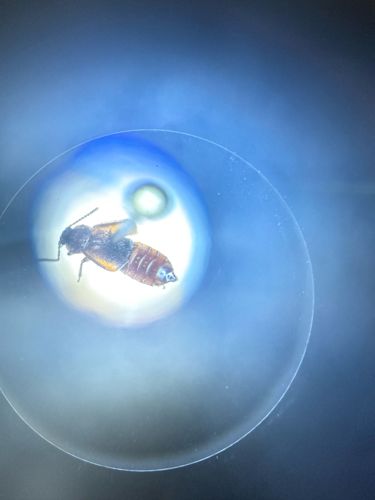Rove Beetle
Scientific Name: Staphylinidae (family)
Order & Family: Order: Coleoptera, Family: Staphylinidae
Size: Typically 1-20 mm, though some species can be smaller or larger.

Natural Habitat
Highly diverse; found in nearly all terrestrial habitats including leaf litter, under bark, in decaying matter, soil, fungi, dung, ant/termite nests, and around water bodies. Many species are associated with human dwellings.
Diet & Feeding
Most are predatory, feeding on other small insects and invertebrates (e.g., mites, springtails, insect larvae, aphids, nematodes). Some are scavengers, feeding on decaying organic matter, while others are fungivores or feed on plant material.
Behavior Patterns
Known for their short elytra (wing covers) that leave most of the abdomen exposed, allowing for greater flexibility. Many species are active and can run quickly or fly. When disturbed, some may raise their tail like a scorpion. They play a significant role in ecosystems as predators and decomposers.
Risks & Benefits
Benefits: Major predators of agricultural pests, contributing to natural pest control. Some assist in decomposition. Risks: A few species, particularly those in the genus Paederus (blister beetles), produce pederin, a potent toxin that can cause 'dermatitis linearis' (rove beetle dermatitis) if crushed against the skin, resulting in skin irritation, redness, and blistering. However, the majority of rove beetles are harmless to humans.
Identified on: 10/22/2025